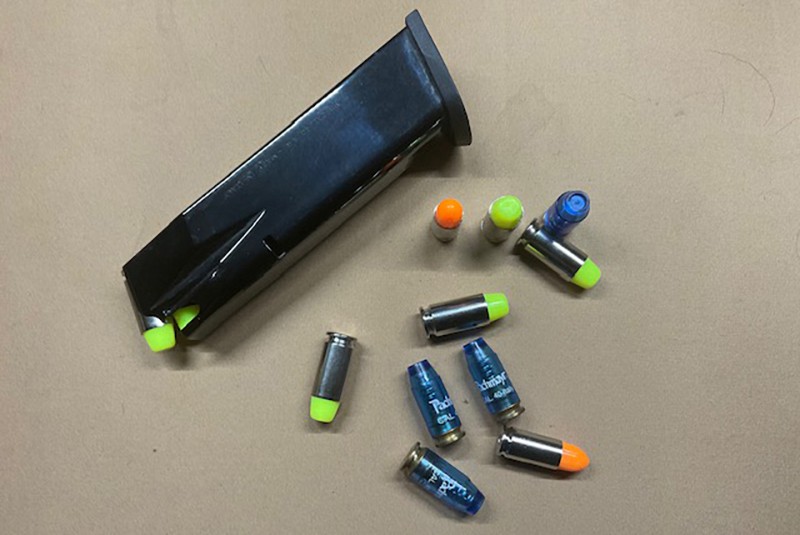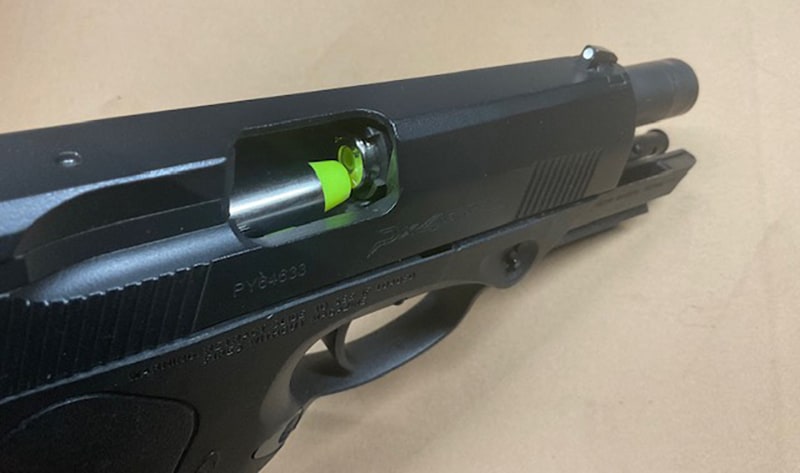Dummy Ammunition
Malfunction Drills
Okay, I get it. Writing about dummy ammunition is not the most glamorous topic. It’s not the same as writing about the latest handgun or rifle on the market. But if you’re a gun enthusiast, this is something you need to own. Why? Because it’s the perfect way to prepare for one of the worst situations you can find yourself in during a gunfight — a weapon malfunction.
Improved handgun designs, better magazines and much-improved ammunition have almost caused the dreaded malfunction to become extinct. This has also significantly reduced the number of people who practice malfunction drills. Don’t let this be you – especially when it’s so easy to be prepared. I say it’s easy. The exercises themselves are easy to learn. Developing them to the point where they are instinctive is a challenge. Like any other perishable skill, you’ve got to learn them and then maintain them. This only comes through consistent repetition.
Setting Up Malfunction Drills
Two main malfunction drills can be set up using dummy rounds: The simple malfunction drill and the complex malfunction drill. The first malfunction type is a simple fail-to-fire situation. This is when you pull the trigger and get a “click” rather than a “bang.” (As a reminder, click is bad, and bang is good!) Many things could cause this, but the most common is bad ammunition. The firing pin strikes the primer, but the round doesn’t fire. The situation requires immediate remedial action to get the gun functional again.
Simple Malfunction Drill
This is known as the Tap-Rack-Bang drill. When a round doesn’t fire, you tap the magazine to ensure it is properly seated, then rack the slide to eject the offending round from the chamber and load a fresh one from the magazine and finally, you begin shooting again — the bang. This drill is easy to practice by randomly loading a dummy round into the magazine before shooting. When the dummy round is chambered and fired, you’ll experience the malfunction and go directly into the clearing drill.
Complex Malfunction Drill
The complex malfunction is …well … a little more complicated. It’s when you encounter the simple failure to fire and go through the Tap-Rack-Bang clearing drill, but the gun fails to fire the second time as well. This indicates the problem is more severe and requires a more involved clearing drill. It has been called by many different names, but I prefer the Rip-Rack-Reload terminology; it has a nice ring to it. To execute it, you rip the magazine from the gun (forcibly pull it out if necessary), rack the slide three times to clear any rounds that may be in the chamber and then reload the gun with a fresh magazine. Now you’re back in the fight.
As an instructor, I set up these drills for my students so they are unexpected. I load the magazines for them and substitute one or two dummy rounds in place of live ones. The only thing you don’t want when doing this is to load two dummy rounds together. There should always be a live round between them for the simple clearing drill. Stick with only the simple drill until you are reacting naturally to malfunctions. When you get to that point, pat yourself on the back. You’re ahead of most shooters. It’s then time to move to the complex drill. This one requires you to put single dummy rounds in some magazines and back-to-back dummy rounds in others. You’ll reinforce your initial drill while adding the complexity of the more difficult one. This keeps the one you learned fresh as you add the new one. Practice these over and over until you can respond to either one instinctively.
Celebrate Your Success
Now it’s time to put the guns away and enjoy a cold one to celebrate your success. You’ll need to make this a part of each range session in the future to keep the skills you’ve learned. Always go through each at least one time per range visit.
I mentioned two main malfunction drills above, but it’s important to note these are not the only ones you can practice with dummy rounds. Stovepipe malfunctions (failure to eject) can also be set up, as can double feeds. These are not easy for repetitive drills, but they can be used to demonstrate and practice. The things you can use these rounds for are limited only by your imagination. Get some and see how many drills you can devise. Once you’ve mastered them, teach them to others.
Get More Personal Defense Tips!

Sign up for the Personal Defense newsletter here:





